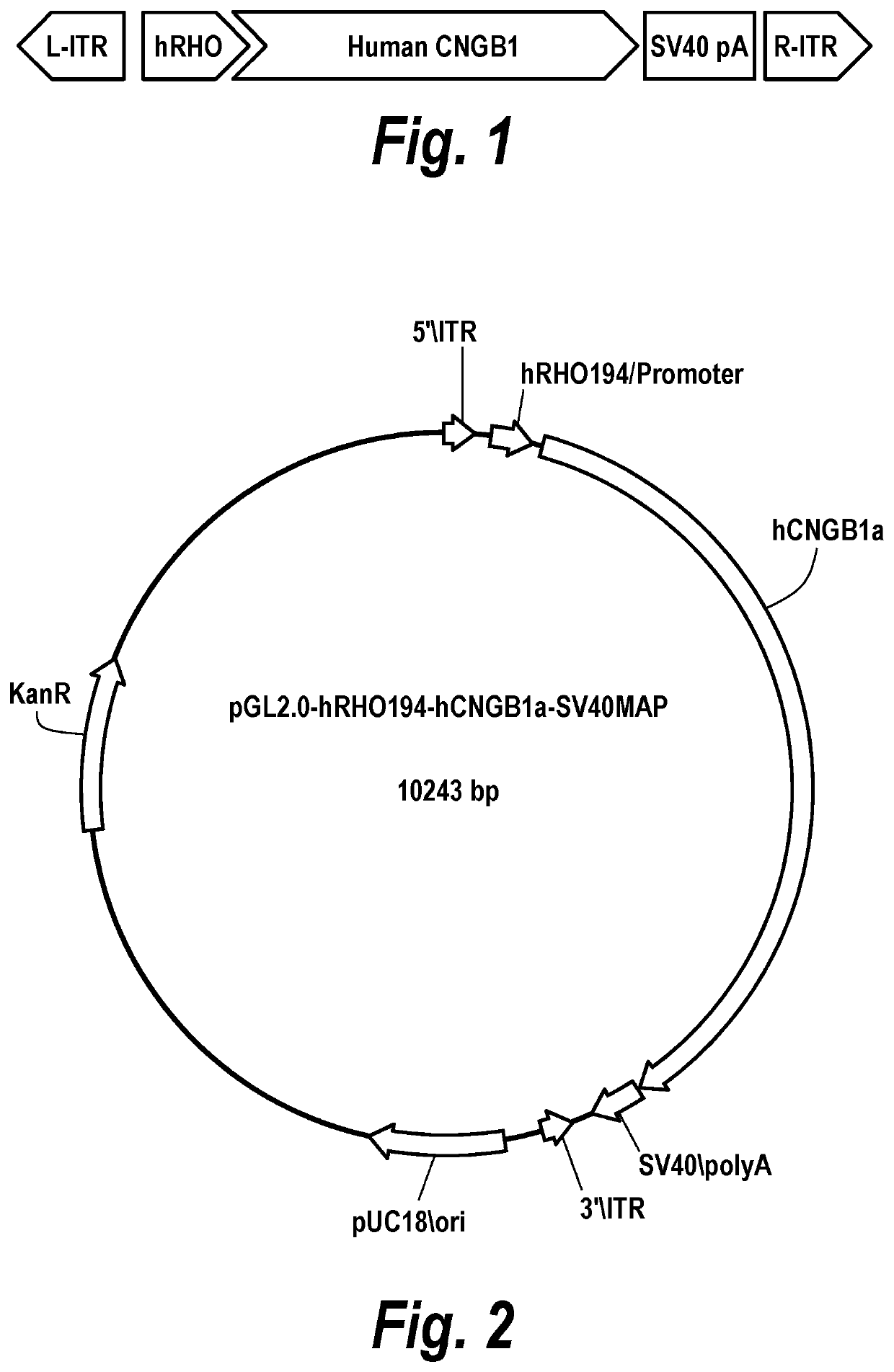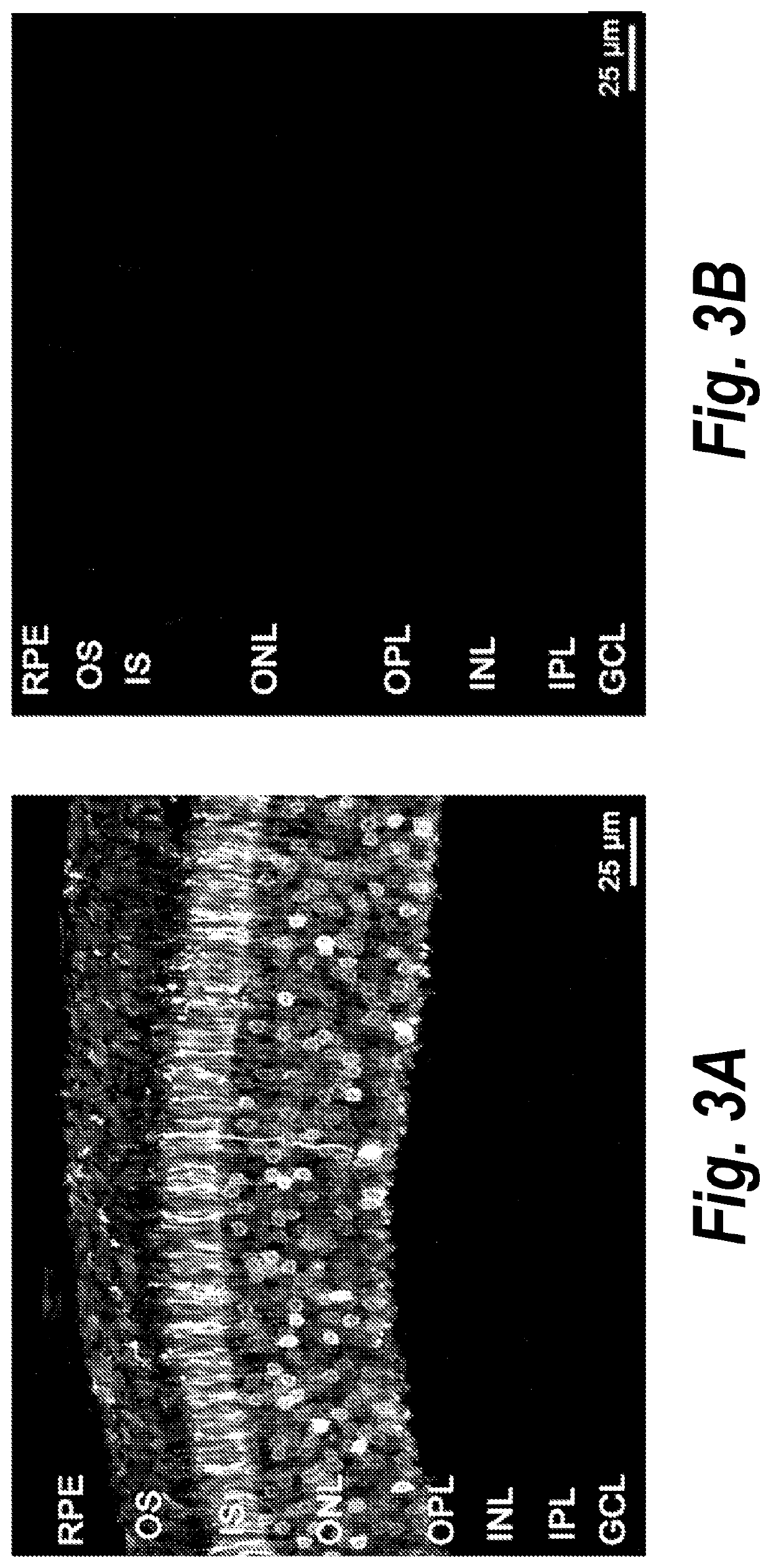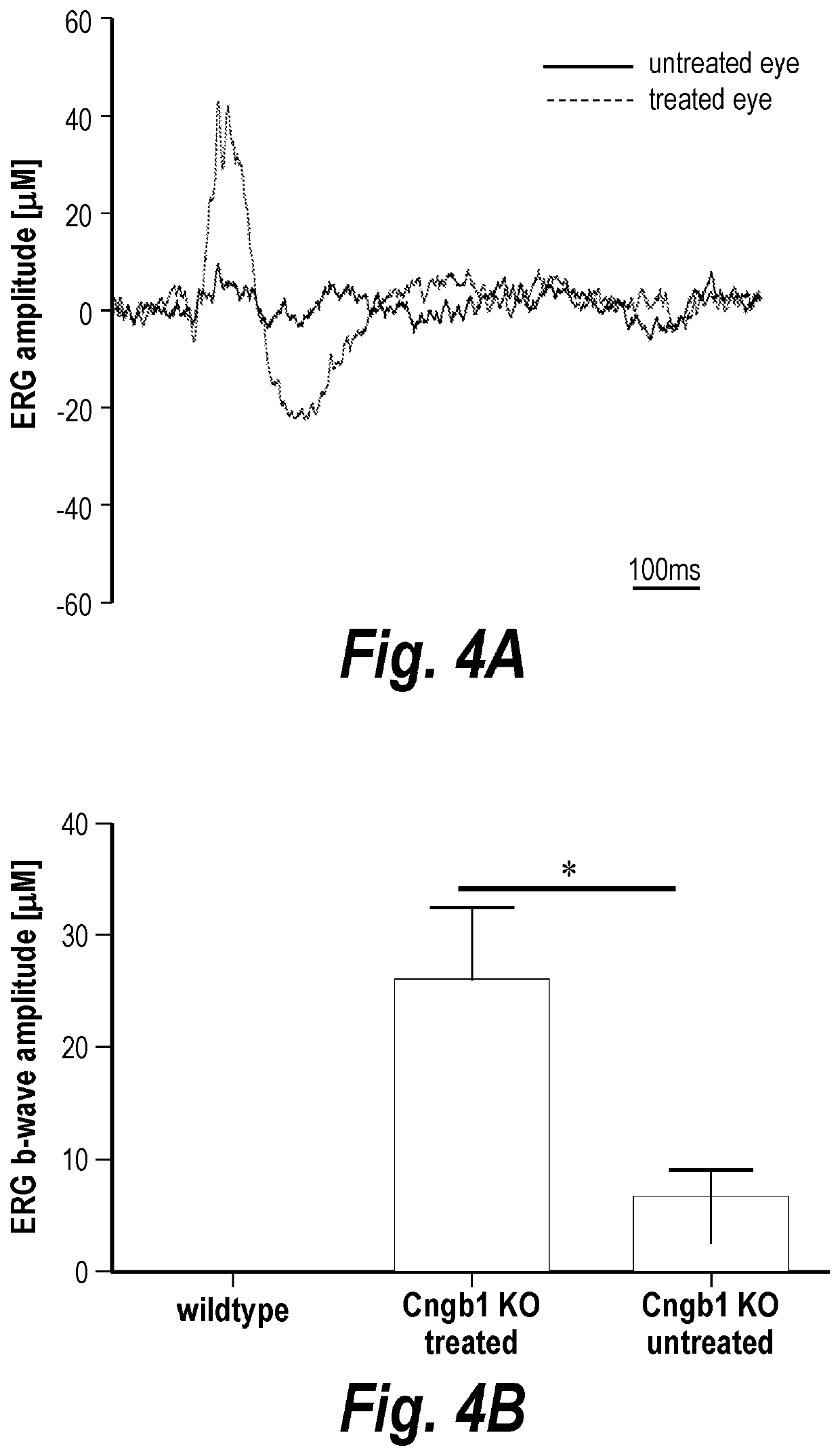Gene Therapy for the Treatment of CNGB1-linked Retinitis Pigmentosa
a technology of cngb1 and retinopathy, applied in the direction of genetic material ingredients, drugs, viruses/bacteriophages, etc., can solve the problems of legal blindness, no curative or symptomatic treatment of rp, severe loss of quality of life of rp patients throughout an extensive period of their lifetime, etc., to improve the visual capabilities of test animals, reduce the size of the construct, and increase the packaging efficiency of the transgene
- Summary
- Abstract
- Description
- Claims
- Application Information
AI Technical Summary
Benefits of technology
Problems solved by technology
Method used
Image
Examples
embodiments
[0174]In the following different aspects of the invention are defined in more detail. Each aspect so defined may be combined with any other aspect or aspects unless clearly indicated to the contrary. In particular, any feature indicated as being preferred or advantageous may be combined with any other feature or features indicated as being preferred or advantageous.
[0175]In gene therapeutic and / or gene corrective therapy approaches in which nucleic acids are introduced into cells, e.g., to augment expression, replace a defective gene, and / or inhibit expression of a defective gene, it is generally desirable that all transgenic elements are small. Nevertheless, it is often difficult to identify transgenic elements that can be reduced in size without negatively effecting or losing their activity in the in vivo situation. Generally, in vitro experiments are not suitable to indicate the in vivo behaviour of the elements making the determination of possible size reductions difficult and u...
example 1
Nucleic Acid Vector
[0253]In this exemplary embodiment, the rAAV.hCNGB1 vector is a hybrid AAV-based vector carrying the cDNA of the human CNGB1 gene encoding the B subunit of the rod photoreceptor cyclic nucleotide-gated (CNG) channel. The hCNGB1 cDNA expression is under the control of the rod-specific Rhodopsin promoter (hRHO) and is enhanced using a SV40 pA sequence. The expression cassette is flanked by the AAV serotype 2 inverted terminal repeats (ITRs) and the recombinant genome is packaged in the AAV serotype 8 capsid. The expression cassette comprises the following elements:[0254]Promoter of the human rhodopsin gene: 0.194 Kb[0255]cDNA of the human CNGB1a subunit of the rod photoreceptor cGMP phosphodiesterase: 3.74 Kb[0256]Polyadenylation signal of the Simian-Virus 40 (SV40): 0.23 Kb[0257]AAV serotype 2 inverted terminal repeats (ITRs): 0.13 KbThe structure of the rAAV.hRHO194.hCNGB1 vector genome is depicted in FIG. 1.
example 2
pGL2.0-hRHO194-hCNGB1a-SV40 cis Vector Plasmid
[0258]In one exemplary embodiment, the pGL2.0-hRHO194-hCNGB1a-SV40 cis vector plasmid with the nucleotide sequence depicted in SEQ ID No. 7 is used which contains an expression cassette comprising a 194 bp rod photoreceptor-specific human rhodopsin (hRHO) promoter and the full-length (3738 bp) human CNGB1 cDNA. The expression cassette also contains a 227 bp Simian-Virus 40 polyadenylation signal (SV40 pA). The 5591 bp vector backbone containing a kanamycin resistance (KanR) positioned 1943 bp from the L-ITR and 2853 bp from the R-ITR and 2024 bp from a pUC18 ori. The rAAV.hCNGB1 vector is produced using transient co-transfection of the cis vector plasmid and trans helper plasmid(s) encoding rep and cap sequences and adenoviral genes in the human embryonic kidney 293 T cells (HEK293T). The rAAV.hRHO194.hCNGB1 is harvested from the culture medium and / or the cell lysate using standard purification methods, e.g. cesium chloride gradient ultr...
PUM
| Property | Measurement | Unit |
|---|---|---|
| TG | aaaaa | aaaaa |
| nucleic acid | aaaaa | aaaaa |
| nucleic acid position | aaaaa | aaaaa |
Abstract
Description
Claims
Application Information
 Login to View More
Login to View More - R&D
- Intellectual Property
- Life Sciences
- Materials
- Tech Scout
- Unparalleled Data Quality
- Higher Quality Content
- 60% Fewer Hallucinations
Browse by: Latest US Patents, China's latest patents, Technical Efficacy Thesaurus, Application Domain, Technology Topic, Popular Technical Reports.
© 2025 PatSnap. All rights reserved.Legal|Privacy policy|Modern Slavery Act Transparency Statement|Sitemap|About US| Contact US: help@patsnap.com



